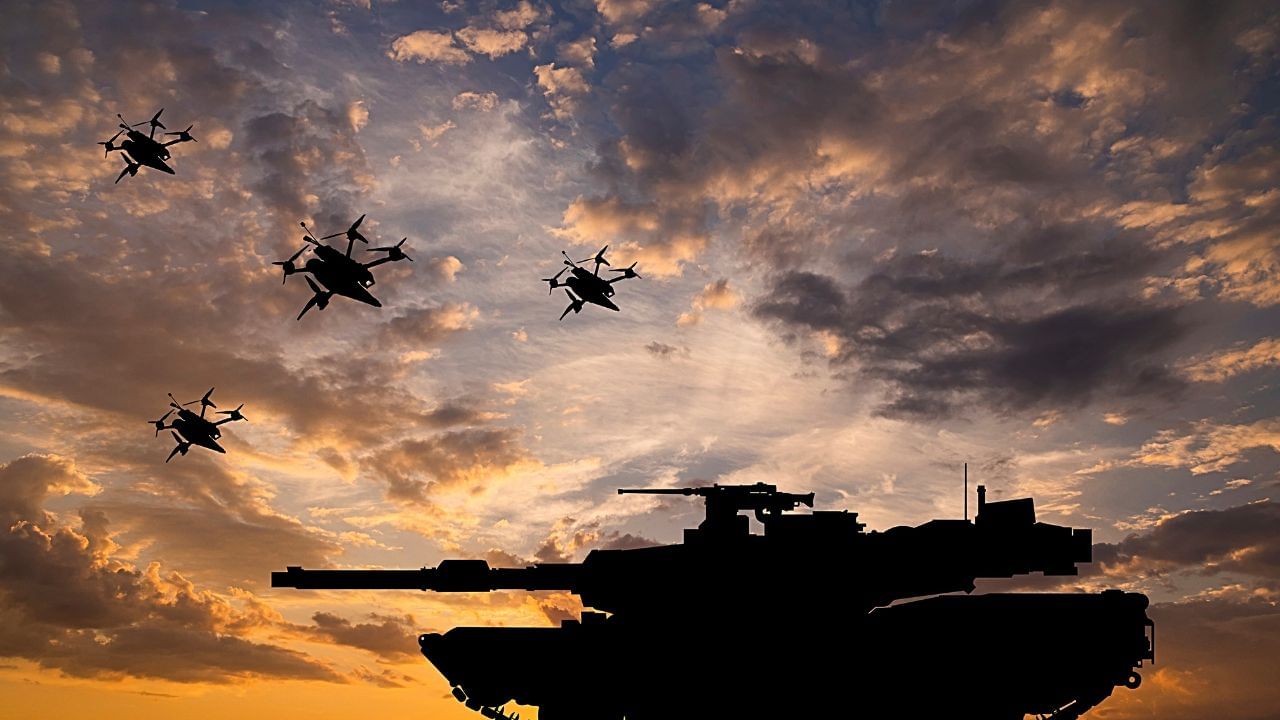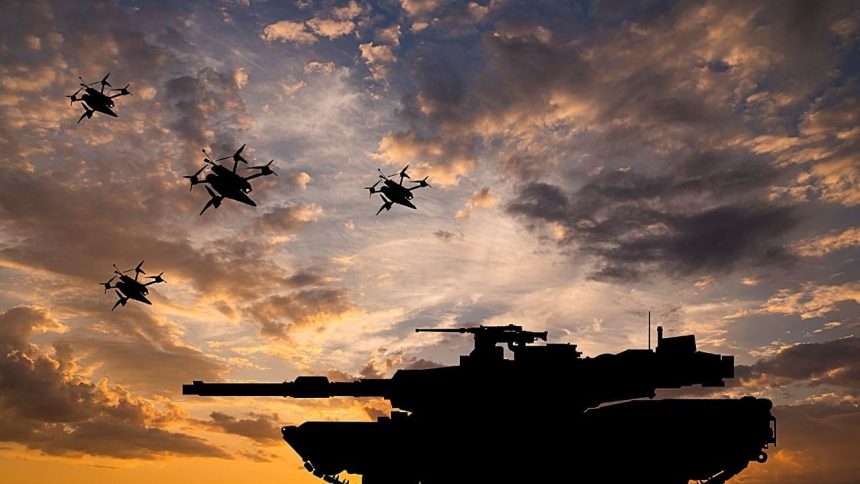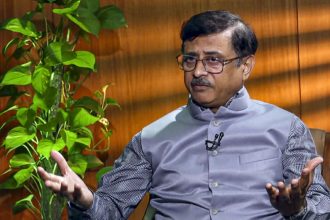
New Delhi: A number drones were used to attack counter – attack, surveillance in India – Pakistan conflict. We could see common people all along the LoC sharing videos of Pakistani drones entering in to Indian airspace. They were called swarms of drones by many. But when we spoke to experts, they explained that they were not essentially Drones swarms but a number of drones launched together. This drone war is a small glimpse of future wars where drones play a crucial role in surveillance, reconnaissance and combat. Although these are single drones operated individually and they cause massive destruction.
Now think of drones that operate in groups of hundreds or thousands. They are automated, autonomous and enabled by artificial intelligence, sensors, weapon systems, navigation technologies etc. They have increased accuracy, lethality and effectiveness. They are dangerous and highly destructive. They are called Drone Swarms. One of the biggest threats of future wars.
“They are ideally suited for striking high-value military assets, strategic installations and even targeted killing,” says Lt Gen Vinod G Khandare (Retd), Principal Advisor, Ministry of Defence.
The Threat
A company in China set a drone swarm world record in September 2020 and then surpassed in March 2021. The Indian Armed forces are looking for weapons to counter a drone swarm.
“Yes there is a threat, no doubt about it. This is the latest and most dangerous. It can not only be used on land but also on maritime territory. It can nullify your maritime air defence system and can be used to damage your ships,” says Gen Khandare. “Chinese in the last four or five years have demonstrated large number of civilian drone swarms but it doesn’t mean that they are not working on military drone swarms,” says Gp Captain (Dr) Rajiv Kumar Narang (Retd).
So threat in particular may be from China but its a two front threat for India including from Pakistan and we have seen that in this India- Pakistan conflict. “Whatever is available in the inventory of China can be used against India. If drone swarms are there in China it will come to Pakistan,” says Gen Khandare.
The drone swarms, being small in size, flying at low speeds and low altitudes, and having the ability to identify targets by using onboard sensors and carry out collaborative attacks on multiple targets, pose the biggest challenge for air defence planners. “They are ideally suited for striking high-value military assets, strategic installations, large gatherings and even targetted killing,” says Gp Captain (Dr) Rajiv Kumar Narang (Retd). Elimination of some of the elements does not stop a swarm from pursuing a collective mission.
Where does India Stand?
“When India decided to open up and incentivise the defence production sector, that is the speed that we gained. Otherwise earlier we were totally dependent only on govt sector,” says Gen Khandare.
Indian Air force had taken an initiative on October 8, 2018 when they launched Mehar Baba swarm competition. 50 drones had to be developed which could undertake humanitarian assistance and disaster relief operations.
How does a Drone Swarm work?
Swarm works in different types of architectures. There are some architectures in which there is a leader and rest are followers, and in some architectures every drone itself is a leader.
“In architecture one, when the leader fails, the swarm together appoints another leader. In another architecture, everyone is talking to each other and coordinating about the main objective,” says Smit Shah, President, Drone Federation of India.
Realising the swarm drone threat along the LAC and drone menace along LoC, India has been putting in its efforts to boost indigenous drone manufacturing. But nowhere is this effort as pronounced as it is with the IAF bootstrapping a group of drone entrepreneurs to create swarm drones. What Indian Air Force’s Mehar Baba Swarm Drone Competition has achieved is phenomenal. It created an Indigenous industry which has got orders worth around 900 crore at a cost of just over 16 crore.
Difficult to Counter
They can not be countered by traditional Kinetic means. Moreover, Armed forces are more geared up to pick up larger aviation targets and faster aviation targets and not small and slow moving targets like a drone swarm.
“It can fly very close to the ground and therefore it is very difficult to detect, whereas if detected, you will be detecting them at a very short range. Basically, the enemy or the person who is at the receiving end of the swarm attack will have seconds or a few minutes to react. And that’s that is what makes it very effective,” says Tanmay Bunkar, CEO at BotLab Dynamics PVT LTD .
How to Counter a Drone Swarm ?
This necessitated the need to develop a system which could detect small, slow and low flying drones.
“One of the key components of a counter drone system are microwaves, lasers and EMP systems. These are high power systems, and they can be very effective, but they still need to be tested exhaustively,” says Smit Shah.
“We have people who are working on ASR radars being used to detect drones that are not having radio signature. We have people who are also working on RF based detection technologies etc.,” says Smit Shah.
“So there is no single solution. You have to rely on multiple solutions,” says Gen Khandare.
Are we prepared?
Tanmay Bunkar concludes, “ Till now, nobody has deployed a swarm of drones in the battlefield scenario, so everybody’s gearing up for it.”










